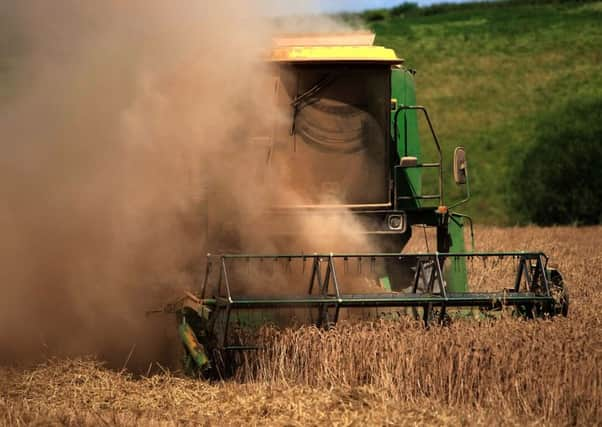Breakthrough in battle against worst wheat disease
This article contains affiliate links. We may earn a small commission on items purchased through this article, but that does not affect our editorial judgement.


The foliar disease – which can reduce crop yields by up to 50 per cent – is a particular problem in cool and wet climates like Scotland’s.
With most commercial varieties currently highly susceptible, the reduction in the effectiveness of fungicide sprays in recent years has seen attention focused on breeding new varieties less prone to the disease – however progress has been slow.
Advertisement
Hide AdAdvertisement
Hide AdBut scientists at the John Innes Centre (JIC) announced this week that they have discovered why it has been so difficult for crop breeders to produce wheat varieties which combine high yield and good resistance to the disease which first emerged as a serious threat to wheat in the 1970s.
Professor James Brown, head of crop genetics research at the institute, said that using a technique called association genetics to look at wheat varieties grown over the past 150 years had shown that the gene with the biggest effect on increasing susceptibility to septoria was very closely linked to one that increased both grain size and yield.
Brown said that it looked like the gene promoting susceptibility to the disease had effectively “hitched a free ride” over the past 50 years as breeders selected for higher yields.
“As we studied a historical set of varieties covering more than a century of wheat breeding, we discovered where the small region of the genome that increases both septoria and yield came from,” he said.
“We traced it back to a variety called Heines Peko, which was used to breed for yield and rust resistance in the late 1950s.”
He said that the cross between Heines Peko and Cappelle Desprez, the major wheat variety grown in Britain at the time, had been so influential that all modern wheats bred in Britain were descended from it.
“My group is now trying to find out if the connection between the two traits can be broken,” said Brown, who added that increased yield remained the main driver of the market for new varieties.
He added that although there had been some improvement in resistance to the disease over the last ten years, the lack of knowledge about the relationship between yield and susceptibility had hindered progress.
Advertisement
Hide AdAdvertisement
Hide AdEd Flatman, head of wheat breeding with one of Europe’s largest breeding companies, Limagrain, said that the work would help identify novel septoria resistances in current, high yielding elite varieties – and pointed to a way of rising to the challenge of combining yield and resistance to the disease.
Brown said that the breakthrough would allow breeders to improve septoria resistance, while minimising undesirable side-effects, such as reductions in yield.
“With the pressures of restrictions on pesticide use added to septoria becoming insensitive to most fungicides, farmers need varieties which combine yield and quality with resistance to septoria and other diseases.
“Our breakthrough should accelerate progress in developing these new varieties.”
